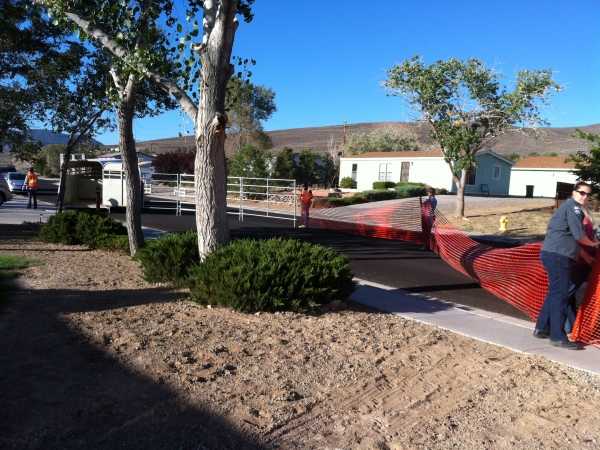|
Please note: This feature is a case study example. Specific details on using construction netting to move horses can be found at
Using Construction Netting
for Emergency Containment.
One of the difficulties encountered with free-roaming urban horses is that while feral, they are somewhat desensitized to humans, human activities and the human environment. As a result they get into all kinds of places where they don't belong. We can't just halter feral horses to relocate them. We have had to develop specific techniques to get these horses out of various predicaments.
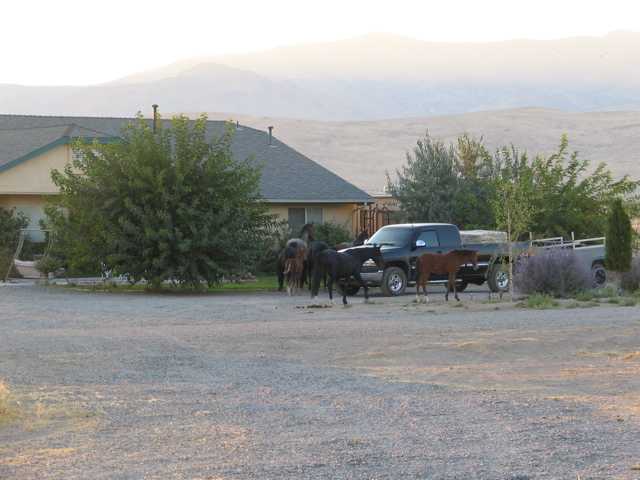
One of our "tools" is a portable construction netting corral. Construction netting is useful for collecting and moving horses that have gotten loose, moving uncooperative horses that require immediate removal during emergencies, and as is so often in our practice, removing feral horses that have wandered onto private property and won't leave.
We happened to have a camera available during a recent deployment of the construction netting corral. In this incident two young bachelor studs wandered into a commercial dog kennel while a driveway gate was left open. The kennel operators own burros and the horses discovered the hay shed where the burros' feed was kept.
The property owners were unsuccessful in herding the bachelors back out the driveway gate. Instead they occupied an empty corral next to the burros. When herded out of the corral, they would circle around and run back in to be next to the burros.
Being somewhat desensitized to people but still feral, the horses weren't easy to move.
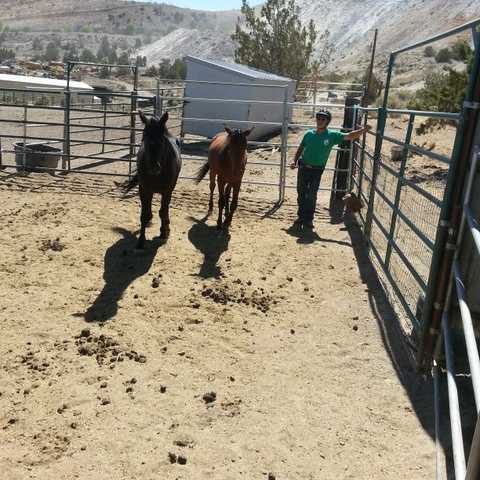
We responded with Trailer 2 that carries loading chute panels and some construction netting. In this operation we set up a loading chute, opened the corral gate inward, approached the horses from the opposite side with the construction netting, herded them into the chute and swung the corral gate closed behind them. The whole operation, including set-up and tear down, took less than ten minutes.
The first step involved setting up a loading chute.
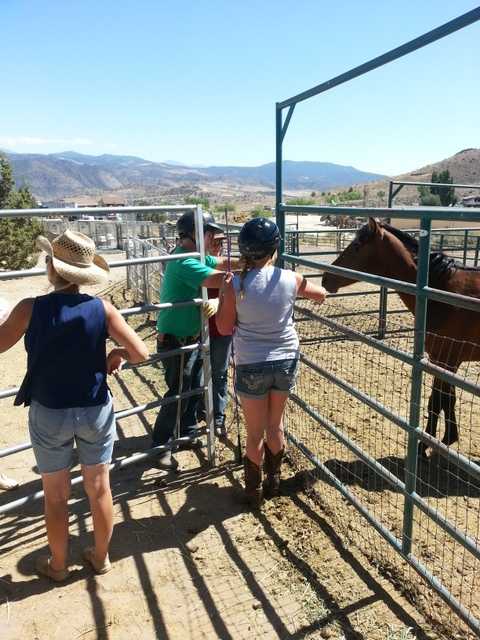
This was a relatively small area so three people could handle the netting, first creating a sort of
"V" shape to contain the horses, then straightening the netting to push them into the chute.
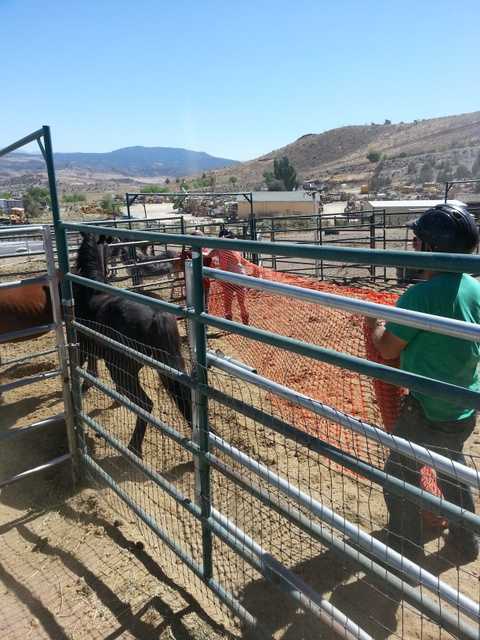
Soon the horses settled into the chute.
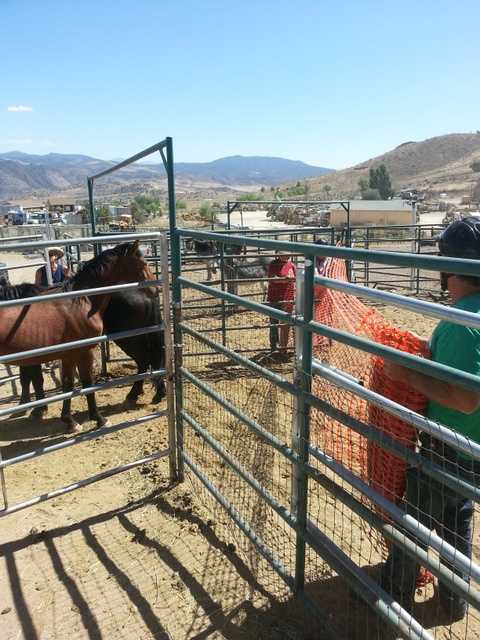
Then the corral gate could be closed.
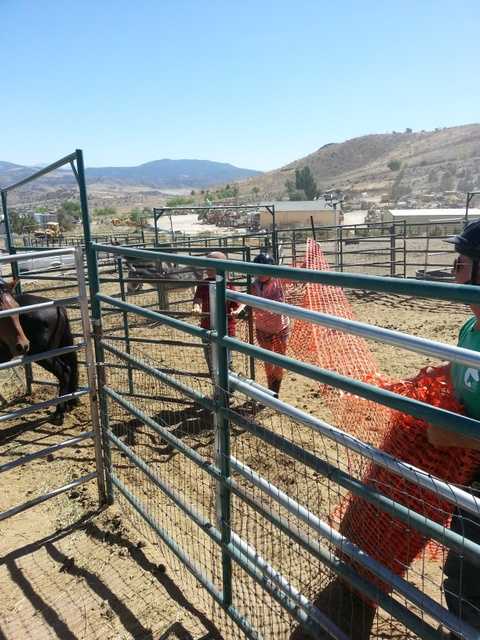
The horses loaded before the photographer, who also served as the trailer's gate latch operator, could get a photo of the horses in the chute before he had to go secure the trailer gate.
Successfully relocated just outside of the subdivision where the horses belong.
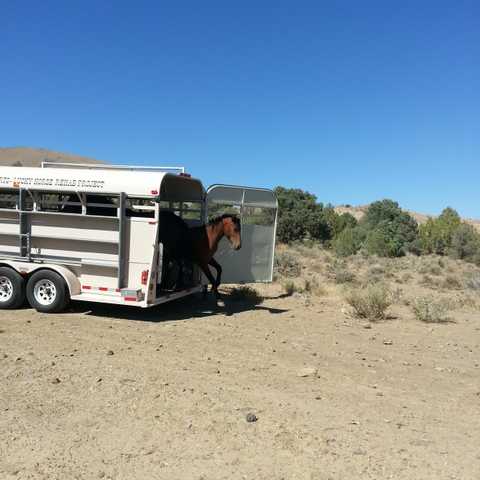
Key points.
Construction netting can be very effective when moving livestock however a few key points must be considered.
- Have everything set up where the animals are being moved before introducing the construction netting. It doesn't take some animals very long to figure out that the netting really isn't very scary.
- Use enough people to keep the netting taut. In some instances an effective approach can include securing one end of the netting to a fence or corral panel.
- The people operating the netting have to be coordinated. Only one person should call out the "moves" and everyone needs to work together.
- There is an effective level of energy that should be used when containing and/or moving livestock with construction netting. If we stay too quiet the animals may find a way around the netting. If we become too active they could scatter or get too busy to see the opening we are trying to get them through. Use just enough energy to keep them moving in the right direction.
- If animals start to get desensitized to the netting, raising the netting on the opposite side from the direction we want the animals to go by about a foot will usually get them to move in the right direction again.
- An agitated horse could charge towards the netting to get through. If immediately raising the height of the netting didn't turn it back, we would simply let the horse or other animal through and remain quiet rather than risk injuring someone or some animal. Once things calm down we can reset the operation.
- Everyone must don appropriate helmets before entering the corral with the horses. This is an essential safety issue. Something as simple as stumbling if things get busy can result in a lacerated scalp and trip to the emergency room for sutures.
- As with any animal handling operation, awareness, calmness and clear thinking will produce safe and effective results.
- This is a skill that should be practiced in a proper training environment using live animals before attempting in the field.
|










